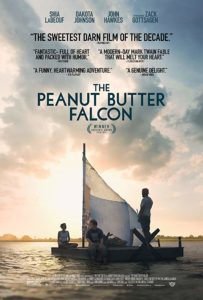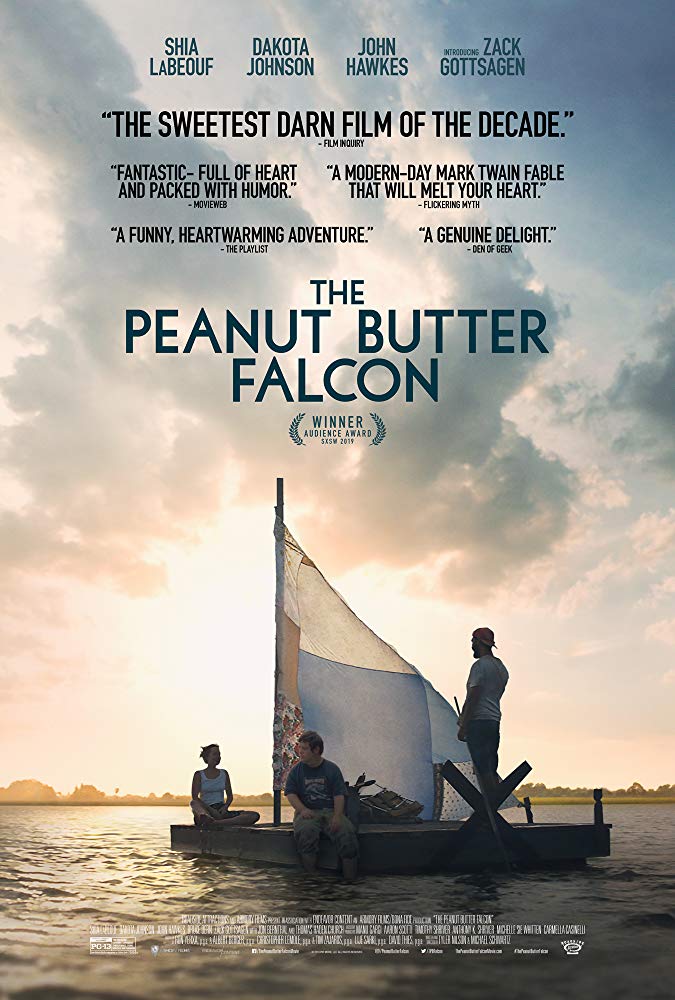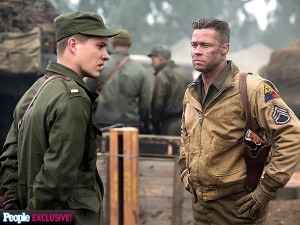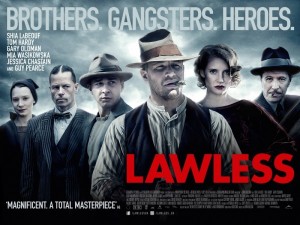The Peanut Butter Falcon
Posted on August 8, 2019 at 5:38 pm
B +| Lowest Recommended Age: | Middle School |
| MPAA Rating: | Rated PG-13 for thematic content, language throughout, some violence and smoking |
| Profanity: | Strong language |
| Alcohol/ Drugs: | Drinking, smoking |
| Violence/ Scariness: | Some peril and violence, character injured |
| Diversity Issues: | A theme of the movie |
| Date Released to Theaters: | August 9, 2019 |
| Date Released to DVD: | November 11, 2019 |

It is remarkably assured for a first film, with an excellent supporting cast of talented pros and superb cinematography and music choices. The genuine affection and — especially — the respect Nilson and Schwartz have for the real-life Zack and the character he plays keep this story from being condescending or sugary.
Gottsagen plays a character also named Zack, a young man with no family and no resources who has been placed by Virginia authorities in the only facility they could find for him, a nursing home for the elderly. His roommate there is a retired engineer named Carl (Bruce Dern), who helps him escape, after watching Zack’s VHS tape of his favorite wrestler, the Salt Water Redneck for the zillionth time. Zack wants to be a wrestler, and his dream is to get to the Salt Water Redneck’s training facility in Florida. This is not one of those “there is none so cognitively impaired as those who will not think” movies.
Importantly, Zack is not a narrative convenience for the other characters to learn lessons and feel better about themselves. Zack (the character) is a real person with some limitations but a cheerful disposition and a true heart. His view of the world is as constrained by the restricted environment he was put in as by his cognitive ability. “The state has to put you somewhere and this happens to be that place,” he is told. You do not have to have a PhD to know that does not make much sense. And you don’t have to do higher math or be able to explain the metaphors in Moby Dick to know that people want to be with friends and follow their dreams. This movie is very much his story and he is very much at the heart of it.
The nursing home administrator does not want to report Zack’s escape to the police, so he sends a sympathetic aide (Dakota Johnson as Eleanor) to find him. Zack’s lack of planning (he escapes wearing nothing but underpants and has no money) helps in a way because he is seen as vulnerable and non-threatening. Tyler (Shia LeBoeuf) is a tidewater fisherman who has fallen on hard times, in part due to his bitterness and grief and guilt over the death of his brother (Jon Bernthal, glimpsed in wordless flashbacks). His own poor judgment escalates a fight with another fisherman (John Hawkes), who comes after him. Tyler does his best to avoid taking responsibility for Zack, but gives in when he sees how much Zack needs help. On the road, they have adventures, encounter interesting people, and begin to first trust and then like one another.
One of the highlights of the film is when they meet a blind man who insists on baptizing Zach. Tyler refuses, saying he prefers baptism by fire. It is presented with sincerity and a delicate lyricism that helps elevate the folkloric tone, as does the exceptional soundtrack and the exquisite cinematography, all of which set the tone for the satisfying conclusion.
Parents should know that this movie has some peril and violence, including arson, shooting, and an attack with a tire iron and an off-screen fatal car accident. There is some strong language, a character runs around in underwear, drinking and drunkenness, and a kiss.
Family discussion: What made Tyler change his mind about helping Zack? Why did the Saltwater Redneck encourage Zack to fight? What will happen next?
If you like this, try: “Little Miss Sunshine” (rated R) from the same producers, “Where Hope Grows,” and “Up Syndrome”



